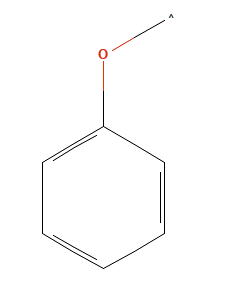Medical Pharmacology Chapter 35 Antibacterial Drugs
Penicillin G and Penicillin V
Penicillin V, or phenoxymethylpenicillin, has the chemical formula C16H18N2O5S and is very nearly identical to Penicillin G structurally.1,2
 |
 |
|
The main difference is in the side chain: a phenoxymethyl group, which is different from Penicillin G's benzyl group due to the presence of an oxygen atom linking the phenyl ring to the acetyl moiety.1,3,4
History:
The discovery of penicillin V stemmed from good fortune.
In 1951, at the Austrian company Biochemie, biologist Ernst Brandl was attempting to solve a bacterial contamination problem in penicillin fermentation tanks by adding phenoxyethanol as a disinfectant.
This approach resulted not only in increased penicillin production but in the creation of a new type of penicillin.
The fungus had metabolized the
phenoxyethanol into phenoxyacetic acid and
incorporated it into the penicillin
structure, creating phenoxymethylpenicillin.
![]() Brandl
astutely recognized that this new compound
was stable in the presence of stomach acid,
a property that penicillin G lacked.3
Brandl
astutely recognized that this new compound
was stable in the presence of stomach acid,
a property that penicillin G lacked.3
![]() This
acid stability is the single most important feature
distinguishing penicillin V from penicillin G.
This
acid stability is the single most important feature
distinguishing penicillin V from penicillin G.
The electron-withdrawing nature of the ether oxygen in the
phenoxymethyl side chain stabilizes the amide bond of the β-lactam
ring against acid-catalyzed hydrolysis.
This fundamental difference, born from a single oxygen atom and a historical accident, determined the clinical distinction between these two drugs:
(1) penicillin G is reserved for parenteral therapy, typically for more severe or inpatient cases.
(2) penicillin V became a staple of outpatient primary care for oral treatment of common infections.
August, 2025
|
|
This Web-based pharmacology and disease-based integrated teaching site is based on reference materials, that are believed reliable and consistent with standards accepted at the time of development. Possibility of human error and on-going research and development in medical sciences do not allow assurance that the information contained herein is in every respect accurate or complete. Users should confirm the information contained herein with other sources. This site should only be considered as a teaching aid for undergraduate and graduate biomedical education and is intended only as a teaching site. Information contained here should not be used for patient management and should not be used as a substitute for consultation with practicing medical professionals. Users of this website should check the product information sheet included in the package of any drug they plan to administer to be certain that the information contained in this site is accurate and that changes have not been made in the recommended dose or in the contraindications for administration. Advertisements that appear on this site are not reviewed for content accuracy and it is the responsibility of users of this website to make individual assessments concerning this information. Medical or other information thus obtained should not be used as a substitute for consultation with practicing medical or scientific or other professionals. |